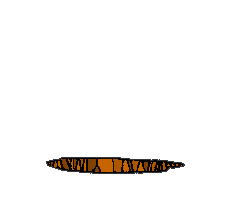

Classifying Antique Bottles
This section helps the collector with some of the conventions used to classify
antique bottles.
To classify a bottle, you need to know it's
Category,
Color,
Condition,
Rarity,
Age, and
be able to match it with the same bottle in a
collector's guide book.
It can also help to know the company
that produced the bottle.
And ultimately most collectors want to
Understand how Bottles are Valued - this page also has good classification
information.
I've also provided a Glossary with some terms
used to describe bottles.
If you're a novice collector listening to an expert, the discussion
will sound strange till you learn some of the "bottle talk" terms in this
Glossary.
Category
This section covers info on the following categories that collectors classify
their bottles into.
While these categories use to be described on this single page, I'm in the
process of creating dedicated pages for each category.
This work is about 85% complete.
To see the latest/greatest list of categories, go to the
main page.
The only categories listed below are the ones that do not have a dedicated page yet.
- Colognes, Perfumes, Scents, and Toilet Waters
See Wendy Poch's
newsletter article on distinguishing these categories.
See
Reggie's Cologne & Perfume bottles,
Larkin Company.
- Cosmetic
See
Reggie's Cosmetic bottles.
- Sealed
Sealed bottles have an applied glass seal on the shoulder or side
of the bottle.
The seal is a molten glob of glass that has been stamped with words
and/or symbols.
See
Reggie's Sealed bottles,
Rob's Blackglass bottles.
Degree of Rarity
Rarity indicates how many specimens (or examples) of the bottle are
available, and not how many were made.
For example, many glass Target Balls were made
but since they were intended to be destroyed (by shooting them in the air),
not many are available.
Rarity is typically used only when classifying expensive bottles
like historical flasks and bitters.
The following terms were taken from page 490 of McKearin's 1971 book on
"American Glass" which classifies the rarity of flasks:
- common to very common - more than 150 specimens available
- comparitively scarce - 75 to 150
- scarce - 35 to 75
- rare - 20 to 35
- extremely rare - 1 to 10
The above scale of rarity refers to the bottle irrespective of color. For
a given bottle or flask, some colors will be rarer than others.
Dating Bottles
The first way to determine the age of a bottle is to check the mold seams running
along the sides of the bottle.
If the seams stop before the lip, then the bottle is BIM (Blown In Mold) and probably
dates before 1910.
If the seam runs through the top of the lip, then the bottle is ABM
(Automatic Bottle Machine) and dates after 1903.
If the bottle has 3 mold lines (one horizontal completely around the shoulder,
and two others from base to this shoulder line), then it was made between
1820-1870.
If the bottle has a pontil, then it dates before 1870.
Please note that these are general guidelines for dating a bottle.
If the bottle has a registration number (e.g. "R27500"), then it's English
in origin and the manufacturing date can be determines from a table located
at the
Odds and Ends page of
Simon Denby.

